The slender, bright red, tubular flowers blooming at the ends of the coral honeysuckle vine (Lonicera sempervirens) will add a bright spot of color to your garden. The interior of the honeysuckle flowers is often yellow, making them stand out even more against the green leaves of this vine. Although the flowers of this vine don’t have a strong fragrance, they more than make up for it with their color.
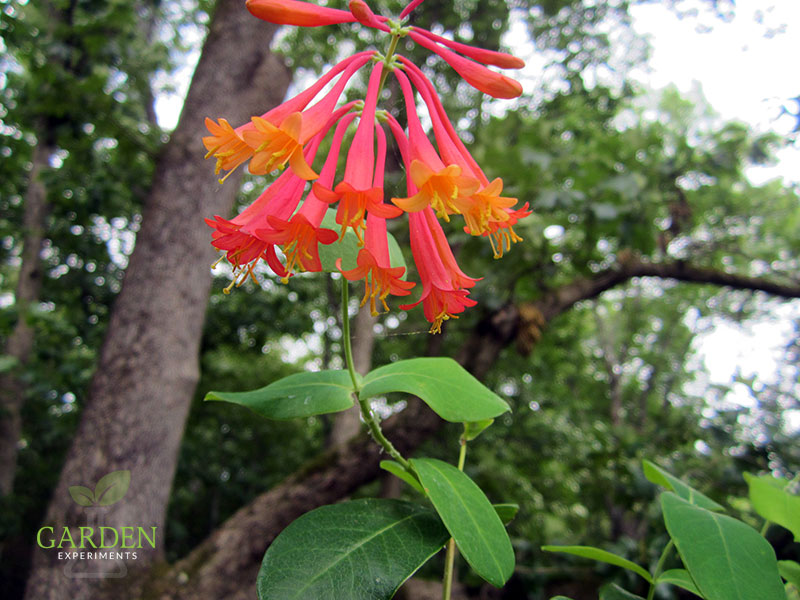
The vine itself is often a hue of pink or purple with bright green leaves that are oppositely arranged. Coral honeysuckle is a native, perennial, woody vine and can grow up to 15 feet in height. In its southern-most U.S. range, this vine is evergreen. As you move further north, it is semi-evergreen to deciduous.
Coral honeysuckle is native from Texas and all states east and northeast of Texas as well as north to Michigan, Iowa, and Kansas.
How to Grow Coral Honeysuckle Vine
Coral honeysuckle, also known as trumpet honeysuckle, can be grown on a trellis, an arbor, or a fence and may reach a height of 15 to 20 feet. It can also be grown on the ground without a support, but the color of the flowers is much more visible when it is grown on a structure. It blooms from spring into the fall.
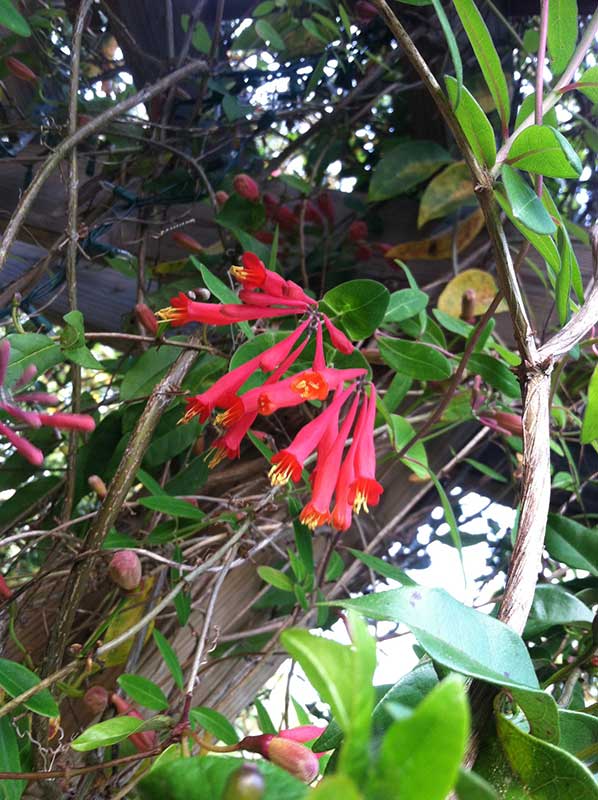
This red honeysuckle vine is easy to care for and can be grown in USDA hardiness zones 4 to 9.
Space your plants 3 to 6 feet apart for good growth. Coral honeysuckle vine is drought-tolerant and deer-resistant. It is also low maintenance – a set-it-and-forget-it type of plant.
Planting Coral Honeysuckle
You should plant your honeysuckle vine in full sun to get the most flowers, though this plant can tolerate part shade conditions.
It prefers moist soil with good drainage and can tolerate various soil types.
How to Propagate Coral Honeysuckle
The easiest way to grow new coral honeysuckle vines is by rooting a cutting. The best time of day to take cuttings is in the early morning. Take a 6-inch-long cutting from the soft part of the vine (non-woody portion). If you take more than one cutting at a time, place them in a glass of water until you are ready to put them in the soil.
Peel away the leaves from the bottom 2-3 inches of the cutting, leaving the leaves at the top 3-4 inches. Remove any flowers.
Prepare your pots for the plants by filling them with potting mix, moisten the soil, and then poke a hole into the center of the soil. This will keep you from rubbing off all the rooting hormone when you push your cutting into the soil. Next, dip the end of the cutting into the rooting hormone and gently press it into the hole you created in your potting soil.
Keep the soil moist but not wet while awaiting the roots to grow. Make sure you keep your coral honeysuckle cutting in indirect and not direct sunlight. Roots will begin to form in a few weeks.
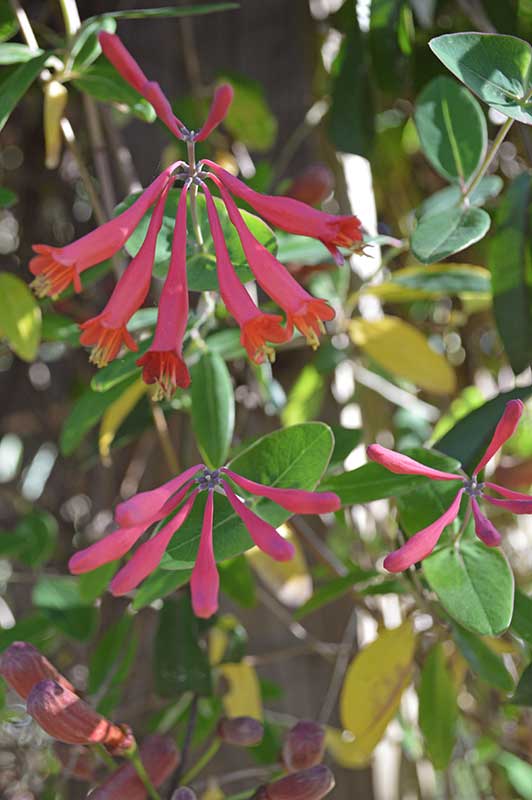
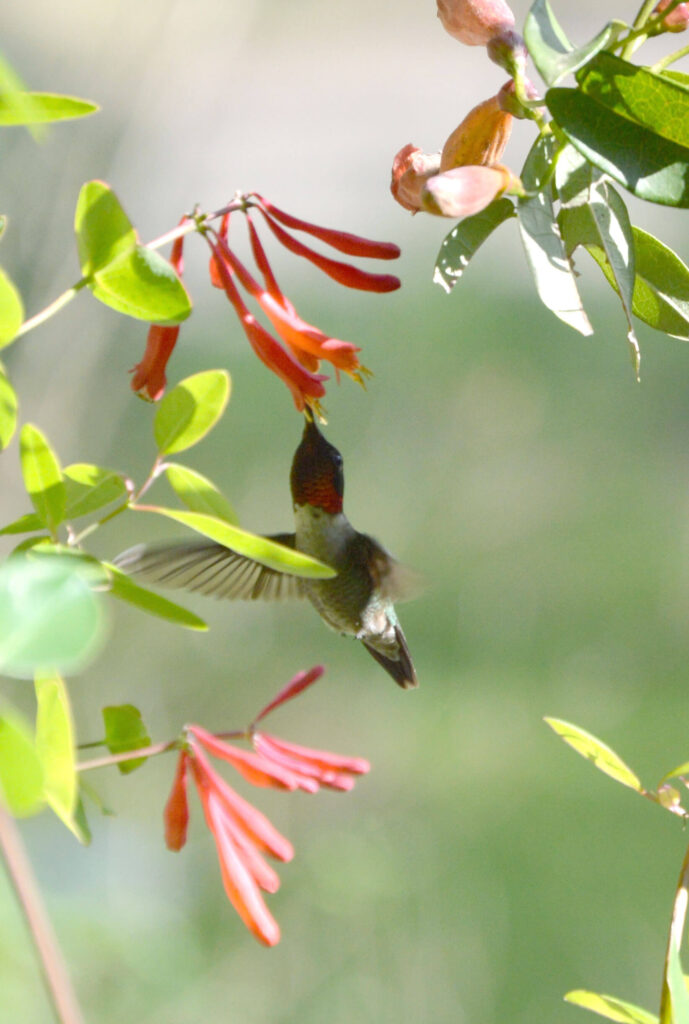
Wildlife Value
This native honeysuckle vine attracts bees, butterflies, and hummingbirds that all feed from the nectar of its flowers. The bright red berries produced in the fall are songbirds.
Coral honeysuckle is a host plant for the caterpillars of the spring azure butterfly (Celastrina ladon) and the snowberry clearwing moth (Hemaris diffinis), a type of sphinx moth.
Growth Rate & Pruning Native Honeysuckle
Unlike the Japanese honeysuckle (Lonicera japonica), coral honeysuckle is not aggressive and has a slower growth rate. You can trim back any unwanted growth in late spring after the main bloom of flowers is over. This native vine blooms on new growth, so wait until most of the flowers have bloomed before pruning so you won’t cut off too many future blooms.
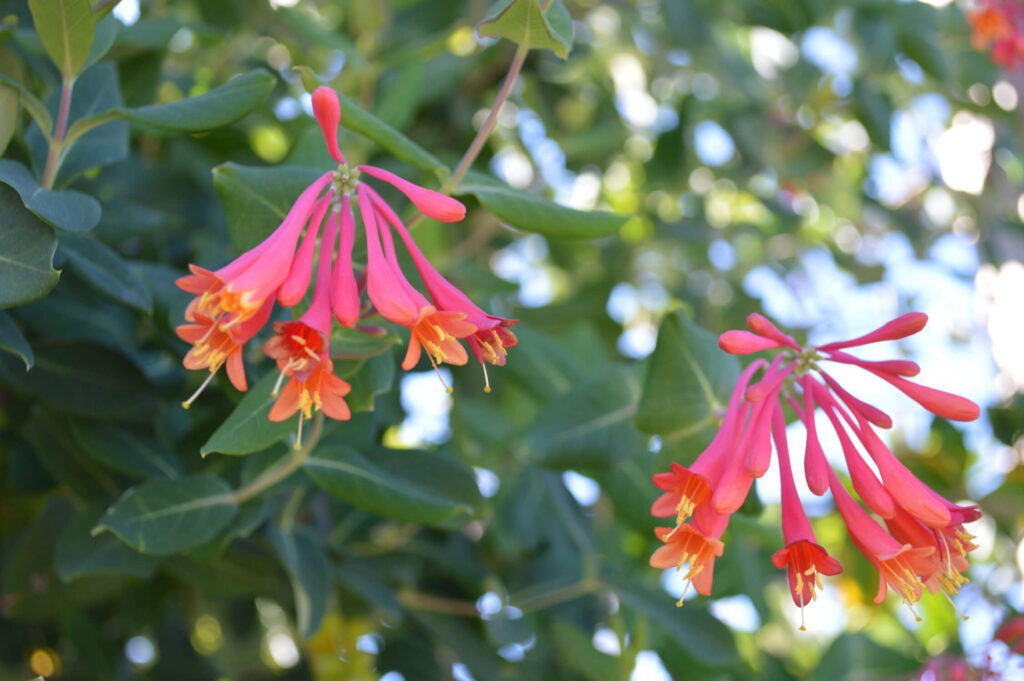
Coral honeysuckle – Lonicera sempervirens
Native woody vine with red, tubular flowers
USDA Zones
Hardy in USDA zones 4a, 4b, 5a, 5b, 6a, 6b, 7a, 7b, 8a, 8b, 9a, 9b
Native Range
Native to Alabama, Arkansas, Connecticut, Delaware, Florida, Georgia, Iowa, Illinois, Indiana, Kansas, Kentucky, Louisiana, Massachusetts, Maryland, Maine, Michigan, Missouri, Mississippi, North Carolina, New Hampshire, New Jersey, New York, Ohio, Oklahoma, Pennsylvania, Rhode Island, South Carolina, Tennessee, Texas, Virginia, Vermont, West Virginia
Water Requirements
Moist soils preferred
Drought-tolerant
Wildlife Value
Deer-resistant
Hummingbirds, bees, & butterflies feed on nectar
Host plant for spring azure butterfly and snowberry clearing moth
Bloom Time
Spring to Fall
Soil Types
Well-drained, rich in organic materials. Can tolerate a wide variety of soils.
Plant Type
Perennial
Evergreen to Deciduous
Woody
Light Requirements
Full sun to part shade. Best blooms in full sun.
Plant Height
up to 15 to 20 feet in height
